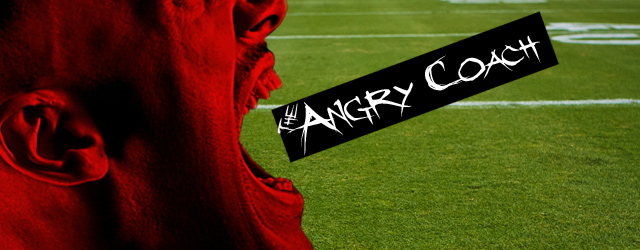
elitefts™ Sunday Edition
May is a strange time to be a football coach, especially at the high school level. Spring workouts are essentially over, clinics are done, most of the athletes don’t give a shit about anything because the school year ends in less than a month, and many of your best athletes are busy playing other sports. May constitutes a weird in-between time, where you’re in a kind of no-man’s land between the spring and whatever type of summer program you have planned.
As coaches, we’re not immune to this complacency. I’ve seen it on every staff, and I see it in myself. Other than working with whatever kids you currently have in the program—and preparing for summer camps and clinics if your school offers them—all that’s really left to do is the choreographing of summer workouts and camp, which is what we’re trying to do right now.
Sometimes this is made more difficult by the existence of all these high schools combines and 7-on-7 tournaments, but I’ve written about all of that ad nauseum, and that’s not the point of this post. Suffice it to say that I believe a football coach should have absolute say over everything in his program—and that outsiders who critique aspects of that program, as private strength coaches are all-too-often inclined to do, are generally unwelcome interlopers that we find ourselves having far too many problems with for my tastes.
Anyway, the point here is that we’re all battling some kind of complacency. What a lot of people don’t realize is that this time of year is the “real” break—and not the period after the season ends. Honestly, when a football season finishes up, even at the high school level, we’re back in the gym very quickly. We typically start our off-season program when our kids return from Christmas break, but when you consider the fact that, at least in most states, the season ends around Thanksgiving, the athletes really aren’t getting much time off before we’re applying pressure again and preparing for spring ball—in whatever form that takes, either official or unofficial.
For coaches, this means there’s not a hell of a lot of downtime if you’re trying to do things right—and by doing things right, I mean taking the time to do a thorough evaluation of your performance during the season you’ve just finished, plotting out your schedule for the spring, and attending clinics so you can learn and improve.
By the time you get to this point, here in May, you need a break from constantly grinding shit out, and you deserve one. Time off, however, usually isn’t an option, because there’s simply too much to do. For example, I’m likely going to spend a good deal of time this weekend putting together workout plans for the summer program and positional coaching schedules for camp.
Trouble is, I don’t WANT to do this. I’m a little worn out, there’s seemingly nobody around who actually gives a shit, I’m not getting any feedback from anyone, and none of this stuff is technically “due.” I’m doing it just because it needs to get done eventually, so why not now?
The difference this year is that we’re actually addressing some of this complacency. We busted our asses so hard at this time last year, that I think a lot of us are looking at the time of year, knowing that Memorial Day is coming up and knowing that summer is about to start, and we’re sitting around thinking, “Again?”
This leads me to my point—and it’s what we’ve been doing, as individuals and as a staff—to fight off complacency and remain productive this year. The first thing we realized we had to do was a sort of “scaling back” of our productivity expectations. When people’s minds aren’t on what they’re supposed to be doing—or they don’t see any reason to keep grinding at some point in the week, month, or year—I’ve found it best to just give them one or two small goals to complete every day, instead of the usual to-do lists we typically have.
This means that instead of a long list of shit in my notebook and calendar, I’m writing two or three things in it the night before, and giving myself the full span of the day, from when I wake up to when I go to sleep, to get them done. And for the past couple of weeks, I’ve been limiting that list to just one or two things, prioritized by how important or pressing they are.
This way, at the end of the week, I’ve done 15 things. It may be better if I’ve done 50 things, but 15 is better than none at all. And who knows? I’ve had a few days where I’ve shrugged off complacency and gotten on a whole productivity kick where I’ve actually enjoyed checking shit off on my list. Either way, the whole idea is to just get a couple of things done every day—and to not spend ANY day getting nothing done.
As coaches, we know that our goal with our players is to get better every day, and to stack together a shitload of good practices before the season starts. The more you focus on this, and the more good practices you start having end-on-end, the easier it gets, and you gain momentum. This can work the opposite way, too, however. If you DON’T take this time to get at least one or two things done every day, those zero-balance days will stack up, as well, making it harder for you to get back into the swing and “turn it on” when you have to.
You don’t want to be rusty when it’s time to get moving and set an example for your players. This is something that’s been working well for us. It’s given us something of a break during our downtime, while allowing us to get a nice head start on productivity for the summer.










